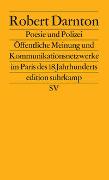- Start
- The Natural History of Animals, Vol. 7
The Natural History of Animals, Vol. 7
Angebote / Angebote:
Excerpt from The Natural History of Animals, Vol. 7: The Animal Life of the World in Its Various Aspects and RelationsAny change in the surroundings which brings the sensitive ness of an organism into play is technically known as a stimulus (l. Slz'mulus, an ox-goad), and stimuli may broadly be classified as mechanical, chemical, thermal, photic, and electrical. The corresponding stimulating agents are pressure, change in chemi cal nature of the surroundings, heat, light, and electricity, which are scientifically defined as different forms of energy, or, to use the old expression, force Protoplasm, like every other kind of matter, may be regarded as made up of excessively minute particles or molecules, much too small to be seen with even the most powerful microscope, which are in a state of constant vibration, throbbing, or to-and-fro movement. The pendulum affords a simple example of vibratory movement. It may further be said that every sort of stimulus is of the nature of a vibra tion, eg. In a sound-wave transmitted through air the particles of air move in a particular way and at a rate depending upon the pitch of the sound. All the changes that take place in living matter result from modifications in the movement of its molecules, but we are profoundly ignorant of What exactly takes place when, say, a muscle-fibre contracts or an impulse passes along a nerve. The adjustment to surroundings that is necessary for the maintenance of life results from these molecular changes in the body, which take place in response to the action of pressure, heat, light, &c., , these themselves being of a Vibratory nature, as has already been stated. So far as an animal is sensitive to its surroundings it is comparable to a complex musical instrument capable of playing all sorts of tunes With all kinds of variations, in response to external in¿uences of different kind. The reaction of an animal to its environment at any given moment depends upon how external agents are acting upon it at that moment: it is they which call the tune. If the supposed musical instrument could also play tunes of its own accord, independently of the direct action of the surround ings, such tunes might be taken to represent the spontaneous actions of an animal.About the PublisherForgotten Books publishes hundreds of thousands of rare and classic books. Find more at www.forgottenbooks.comThis book is a reproduction of an important historical work. Forgotten Books uses state-of-the-art technology to digitally reconstruct the work, preserving the original format whilst repairing imperfections present in the aged copy. In rare cases, an imperfection in the original, such as a blemish or missing page, may be replicated in our edition. We do, however, repair the vast majority of imperfections successfully, any imperfections that remain are intentionally left to preserve the state of such historical works.
Folgt in ca. 10 Arbeitstagen




